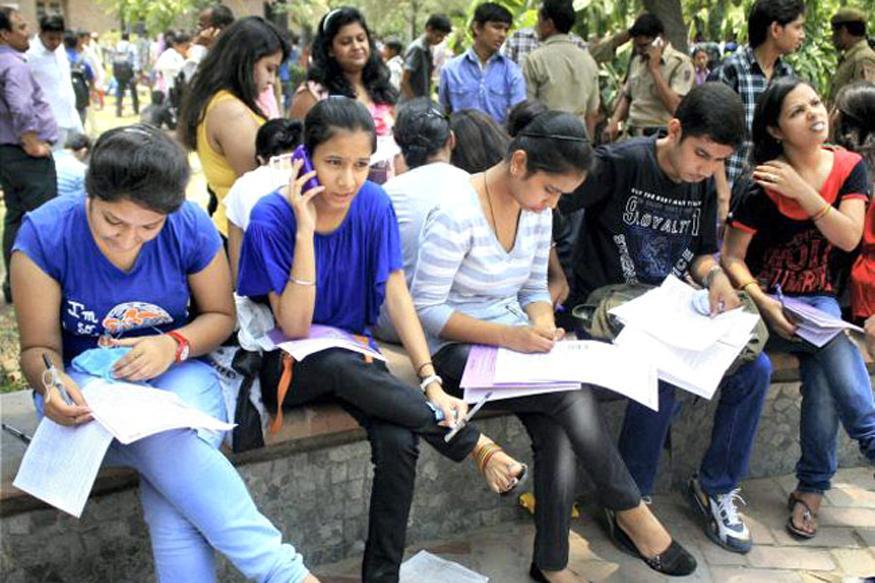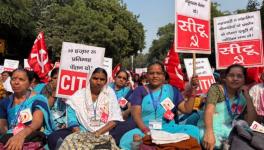Public Education is Not a Priority in Union Budget 2025-26

File Photo: PTI
The Union Budget 2025-26, like all previous budgets with this government, faces an irresolvable contradiction: they want to keep the ratio of fiscal deficit to GDP (gross domestic product) under a certain ratio (due to the pressure of international finance) and they want to increase the rate of growth of the economy. Basic macroeconomics tells us that these two goals are incompatible in general.
In practice, the first goal prevails. Since taxation of the super-rich is off limits, the confinement of the ratio of fiscal deficit to GDP to the level prescribed by the Fiscal Responsibility and Budget Management Act takes the form of expenditure compression.
This compression of public expenditure takes the following forms: one, cut in nominal budget allocations; two, cut in real budget allocations; three, post facto expenditure cuts whereby actual expenditure is less than revised estimates, which in turn are less than budget estimates; four, misrepresenting budget allocation for corpus accumulation or loan repayment, both amortisation and debt service, as expenditure.
Using Union Budget 2025-26 data, we demonstrate how this turned out for public education when compared to the Union Budget of 2024-25.
We highlight four key trends in the case of Union government funding for the higher education sector:
(i) Only 2.4% increase in real budget for the Department of School Education and Literacy and stagnant real budget allocation for higher education in 2025-26 as compared to 2024-25.
(ii) A gap between budget estimates and revised budget estimates in 2024-25.
(iii) An increasing role for Higher Education Financing Agency (HEFA) loans to public educational institutions.
(iv) Rising significance of Madhyamik and Uchhatar Shiksha Kosh or MUSK component in the budget.
The MUSK amount has not been apportioned to any purpose or institution concerning education in 2023-24. MUSK is in fact a non-lapsable corpus in which the annual collection of secondary and higher education cess is apportioned. Though MUSK is supposed to be utilised for various policy programmes in secondary and higher education, there has been no movement in this direction.
The HEFA loans category in the Union Budget has been specified under two heads: (i) Interest payment under HEFA and (ii) Principal repayment amount under HEFA. Allocation under both these heads has been rising in the Indian budget for the education sector. But repayment of interest or principal amounts of loans is not creation of demand.
In 2025-26, the total budget estimate amount for the education sector is Rs. 128,650 crore. This increase in nominal terms by 6.7% as compared to the revised budget of Rs. 120,628 crore in 2024-25. If we consider the average inflation rate to be 5.2%, then the real increase is merely 2.5% for the education sector.
The budget estimate amount for the Department of School Education and Literacy is Rs. 78,572 crore during 2025-26, while it was Rs. 73,008 crore in 2024-25, reflecting an increase of 7.6% in nominal terms. But the real increase is thus merely 2.4% with the 5.2% inflation rate on average.
The revised estimates declined for the Department of School Education and Literacy during 2024-25 to Rs. 67,571 crore, showing a decline of 7.5% in nominal terms as compared to the budget estimates of 2024-25. This gives us an indication of what can be expected when the revised estimates of the Union Budget 2025-26 are released after one year.
The nominal allocation for the Department of Higher Education is Rs. 50,078 crore during the Union Budget 2025-26, which involves a nominal increase of 5.2% when compared to 2024-25. But this involves no real increase since the average rate of inflation is 5.2%.
Moreover, the revised estimates of the last Union Budget’s allocation to higher education were 2.4% lower than the budget estimates. Once again, this does not portend well for what will happen to revised estimates for allocation to higher education in this year’s budget.
The budget estimate of allocations to UGC is Rs. 3,336 crore during 2025-26. This involves an increase by Rs. 886 crore or 33%. But the share of UGC-MUSK is Rs. 2,447 crore during 2025-26, leaving very little for actual expenditure.
Read Also: How Govt Policy is Impairing Public Education
The budget estimate of allocations to AICTE is Rs. 200 crore in 2025-26, which involves a decline by 50% when compared to 2024-25. What is a further concern is that last year’s revised estimates have declined by 65%.
The grants to Central Universities (CUs) for 2025-26 is Rs. 16,146 crore, which involves a nominal rise of Rs. 674 crore or 4.4% but this amounts to a real decline with an average rate of inflation of 5.2%.
The MUSK budget estimate amount is increased to Rs. 5,500 crore in 2025-26. The HEFA interest and repayment of principal of HEFA loan for the Central Universities are Rs. 83 crore and Rs. 462 crore, respectively, during 2025-26. As we pointed out earlier, allocation for loan repayment does not amount to expenditure.
The budget estimate of allocation for IITs in 2025-26 is Rs. 16,691 crore. This involves a nominal increase of 4.6%, which once again amounts to a real decline given an average rate of inflation of 5.2%. Increased nominally by 4.6%, this implies a real decline in the IIT budget over the last year. Further, of this allocation, MUSK, interest, and repayment of principal of HEFA loan are respectively Rs. 4,000 crore, Rs. 240 crore, and Rs. 450 crore during 2025-26, which implies that actual expenditure is lower.
MUSK and HEFA components also figure prominently in the allocation for two other professional education institutions, namely Indian Institutes of Management (IIMs) and National Institutes of Technology (NITs).
In 2025-26, allocation for the NITs/IIEST and IIMs is Rs. 5,474 crore and Rs. 252 crore, respectively. The budget for interest and repayment of principal of HEFA loans in IIMs are Rs. 72 crores and Rs. 150 crore during 2025-26.
The budget for interest and repayment of principal of HEFA loans in NITs is Rs. 81 crore and Rs. 133 crore, and the MUSK budget is Rs. 5,500 crore during 2025-26. This leaves very little for actual expenditure.
The grants for Indian Institute of Science, Education and Research (IISERs) have also declined by 9.4% nominally from Rs. 1,469 crore in 2024-25 to Rs. 1,331 crore in 2025-26. Here too, the HEFA interest and principal amounts are Rs. 10 crore and Rs. 12 crore, respectively. The budget support for the Indian Institute of Science (IISc) is Rs. 894 crore, which involves an increase of 5.9%, amounting to virtual stagnation in real terms with an average rate of inflation of 5.2%.
The entire approach of the Union government involves a neglect of public education. The four modes of jugglery with budget allocations to public education and other areas demonstrate that this government is fully committed to undermining public education. All those who are committed to public education need to resist this policy assault in every possible domain, including mobilisation, battle of ideas, and electoral.
Narender Thakur is Professor, Department of Economics, Dr. BR Ambedkar College, University of Delhi. C. Saratchand is professor, Department of Economics, Satyawati College, University of Delhi. The views are personal.
Get the latest reports & analysis with people's perspective on Protests, movements & deep analytical videos, discussions of the current affairs in your Telegram app. Subscribe to NewsClick's Telegram channel & get Real-Time updates on stories, as they get published on our website.
























